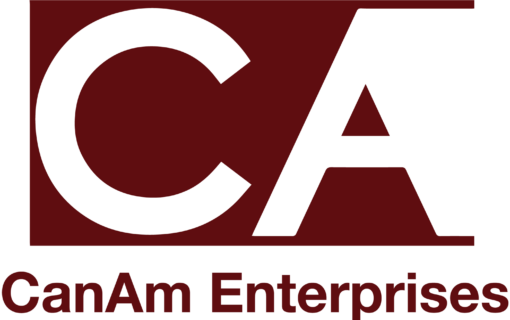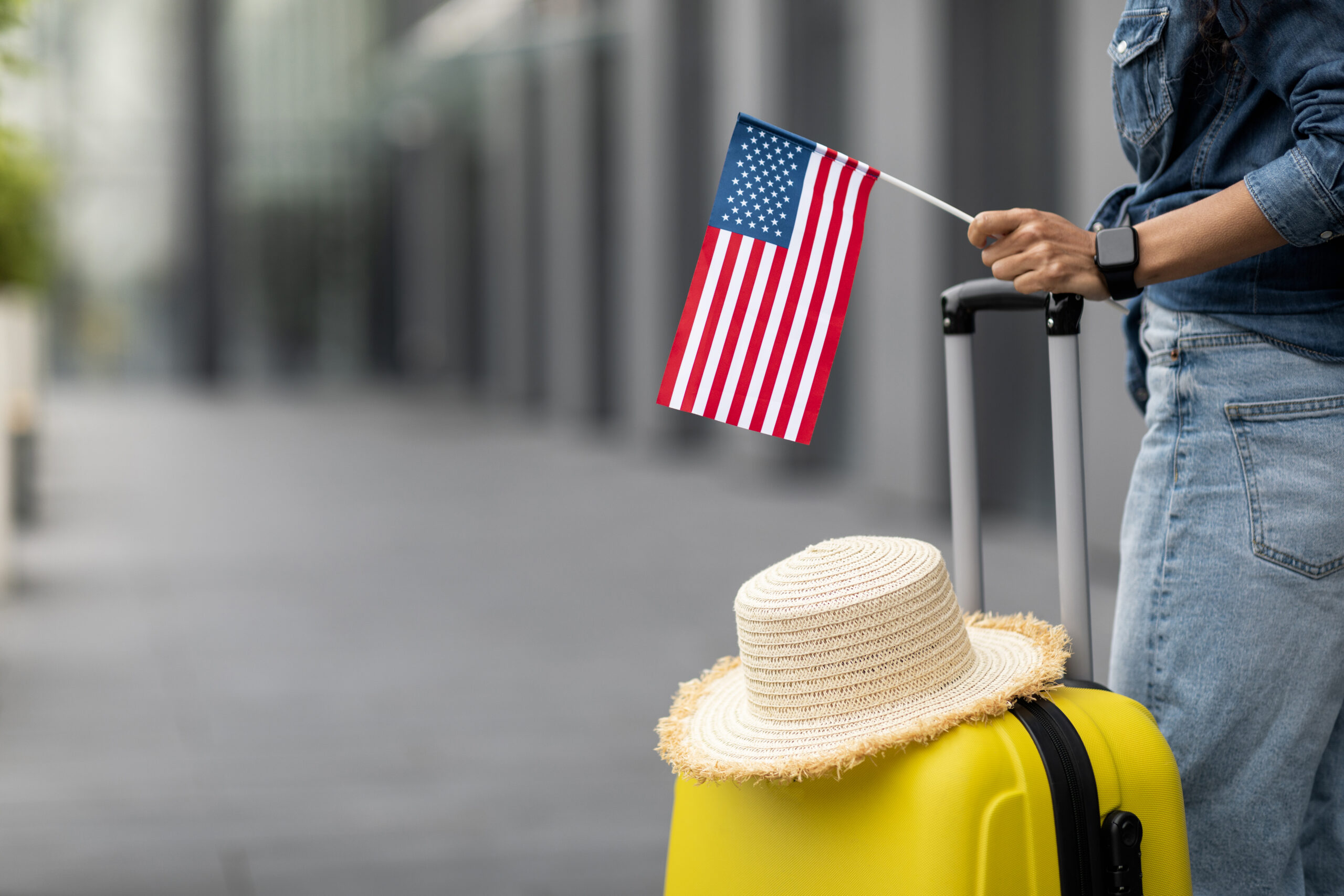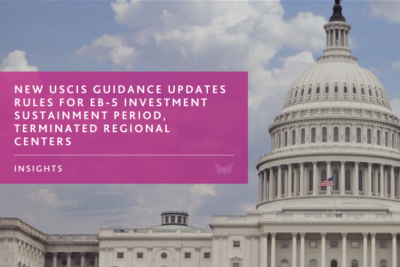In light of the coronavirus pandemic, changes to office workspaces must be made to accommodate distancing and safe collaborative work. Architecture firm FXCollaborative pivoted its forward-thinking designs for One Willoughby Square, one of CanAm’s EB-5 projects.
Forbes | By: Elizabeth Fazzare | Jun 30, 2020,10:40pm EDT
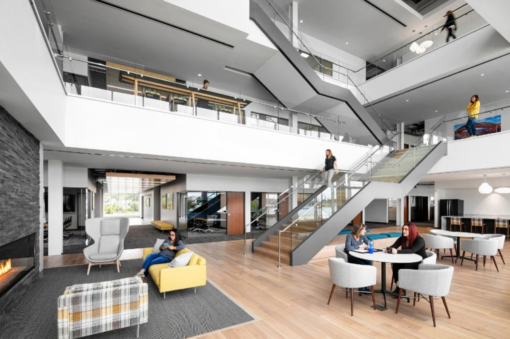
When coronavirus-related stay-at-home orders were announced in the United States this past March, their durations were largely undetermined. But now, nearly four months later, as spikes of infections are being seen again across several states, it has become clear to the design world that changes to physical space must be made in order to stop COVID-19’s spread. Some employers are retrofitting close quarters with protective shields and hand sanitizing stations while others are considering new ways to use their existing office while staying socially distanced. For office workspaces in progress, some have begun asking their designers to revamp plans to accommodate distancing and safe collaborative work. Considering the current global health crisis, what is the future of workplace design? Three architects weigh in on how offices can remain safe after employees return to work.
“The future success of a healthy workplace will be incumbent on smart planning strategies and behavioral responsibility,” says Suzette Subance Ferrier, managing executive and studio creative director of New York-based TPG Architecture. “Right now, we aren’t seeing a complete shift to cubicles. What we are seeing is a de-densification of the workplace.” For each employer, and each office space, she explains, the physical solution will be different, but the key in all cases is flexibility in design. Moveable furniture and partitions, touchless screens and devices, even lockers to protect personal belongings for companies that move to partial work-from-home schedules to keep building at 50% capacity or lower could all be implemented to protect the health of employees. This month, the firm completed a case study for an “office of the future” with COVID-19 in mind. A redesign of an interior plan for a current office project for a TAMI (Technology, Advertising, Media, and Information) client, TPG Architecture’s solution for social distancing keeps a 3-foot radius between workers at desks while also allowing collaborative space for small groups.’
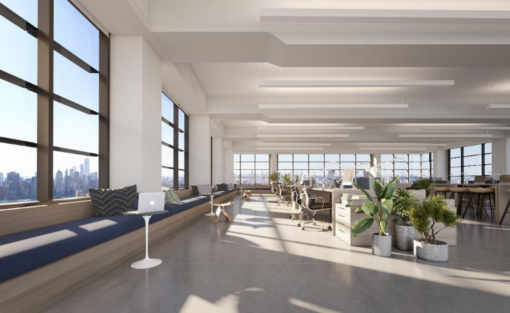
COURTESY DBOX
For its own future office within the One Willoughby Square tower that is currently under construction in Brooklyn, architecture firm FXCollaborative pivoted its designs in light of the coronavirus pandemic. “With a spectacular wrap-around terrace and two balconies, we’ll certainly have a lot of help working smarter and actually outdoors, which has never been more attractive,” says partner and design director Angie Lee. (The firm is designing both the 34-story tower and their own offices inside it.) Renderings show a spacious open plan where breakout spaces for individual work or small group collaboration line the large windows. But, the virus outbreak has also encouraged a shift in company work culture, she insists, which will lead to healthier minds. “The most important thing we are trying to change is our addiction to business ‘as usual.’ That involves everything from being the classic architect/designer who is paper intensive, territorial, and overly zealous ‘collectors’ of finish samples to automatically falling back into the 40-plus-hour workweek,” she explains. Instead the firm will move to be “more mobile, tech-savvy, remotely capable, and healthy.”
Beyond solely the rethinking of the interior design of an office, redesigns and retrofits to the internal systems of a building can also protect employee wellness. Architects at the Omaha, Nebraska-headquartered firm Leo A Daly are considering how changes to a building’s ventilation systems may protect humans from the spread of airborne germs. Managing principal of the firm’s Washington, DC office and vice-president Bill Kline, national director of engineering Kim Cowman, director of technical services Tim Duffy and chief sustainability officer Ellen Mitchell-Kozack recently released a whitepaper that proposes design solutions to building owners and operators to prevent COVID-19 spread while inside. The report draws upon new research from the Annual Review of Virology, which found that humidity levels of at least 40% can substantially suppress transmission, particularly airborne, of COVID-19. Therefore, the team argues, increasing humidity levels inside a building during winter (when infectious diseases spread the most and scientists predict that the nation may see a second wave of COVID-19 cases) may prevent coronavirus spread. In most American cities with cold winters, relative humidity inside buildings is kept at around 20%, sometimes lower. Simply adding standalone humidifiers to an interior could cause “catastrophic damage to the walls, ceilings, and floors,” says Cowman, but retrofitting a building’s enclosure to achieve a high performance level will allow humidification to be sent through new steam dispersion infrastructure.
As some Americans are heading back to work in limited-capacity offices, the workplace looks quite different than it did in the first few months of the year, most notably in the lack of density of coworkers. While some companies are considering full-time or part-time remote solutions for the future, architects argue that the built world can help ensure employees’ safety. “Based on TPG’s employee survey, 86% of respondents said that collaboration with their teams would be their #1 reason for wanting to return to the office,” says Subance Ferrier. With intelligent redesigns, they can do just that.
CanAm Enterprises, with over three decades of experience promoting immigration-linked investments in the US and Canada, has a demonstrated track record of success. With over 60 financed projects and $3 billion in raised EB-5 investments, CanAm has earned a reputation for credibility and trust. To date, CanAm has repaid more than $2.26 billion in EB-5 capital from over 4,530 families. CanAm manages several USCIS-designated regional centers that stretch across multiple states. For more information, please visit www.canamenterprises.com.


